
Portuguese Mozambique or Portuguese East Africa were the common terms by which Mozambique was designated during the period in which it was a Portuguese colony. Portuguese Mozambique originally constituted a string of Portuguese possessions along the south-east African coast, and later became a unified colony, which now forms the Republic of Mozambique.

Maputo, formerly named Lourenço Marques until 1976, is the capital, and largest city of Mozambique. Located near the southern end of the country, it is within 120 kilometres of the borders with Eswatini and South Africa. The city has a population of 1,088,449 distributed over a land area of 347.69 km2 (134.24 sq mi). The Maputo metropolitan area includes the neighbouring city of Matola, and has a total population of 2,717,437. Maputo is a port city, with an economy centered on commerce. It is also noted for its vibrant cultural scene and distinctive, eclectic architecture.

Samora Moisés Machel was a Mozambican military commander and political leader. A socialist in the tradition of Marxism–Leninism, he served as the first President of Mozambique from the country's independence in 1975.
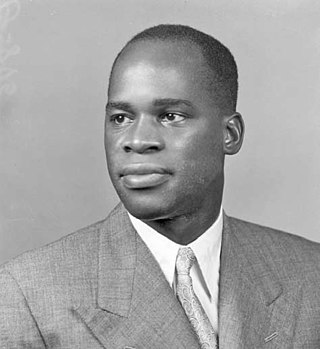
Eduardo Chivambo Mondlane was the President of the Mozambican Liberation Front (FRELIMO) from 1962, the year that FRELIMO was founded in Tanzania, until his assassination in 1969. Born in Mozambique, he was an anthropologist by profession, and worked as a history and sociology professor at Syracuse University before returning to Mozambique in 1963.
The Eduardo Mondlane University is the oldest and largest university in Mozambique. The UEM is located in Maputo and has about 40,000 students enrolled.
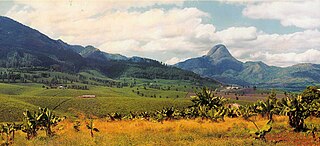
Gurúè is a town located in the northern part of Mozambique, near the center of the province of Zambezia. It serves as the principal town of Gurué District, and is Mozambique's largest tea estate. According to the 2007 census, the town had a population of 145,466, an increase from the 99,335 inhabitants counted in the 1997 census.
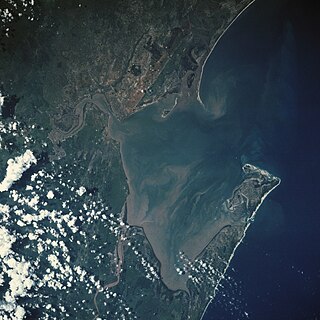
Maputo Bay, formerly also known as Delagoa Bay from Baía da Lagoa in Portuguese, is an inlet of the Indian Ocean on the coast of Mozambique, between 25° 40' and 26° 20' S, with a length from north to south of over 90 km long and 32 km wide.
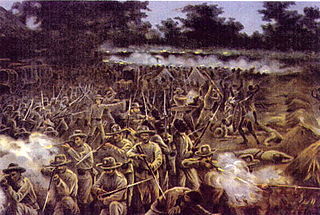
Marracuene, earlier known as Vila Luísa, is a town in Mozambique's Maputo Province in Marracuene District, located 30 km north of Maputo on the Incomati River. The Parque de Campismo de Marracuene, a popular camping destination, is located nearby.
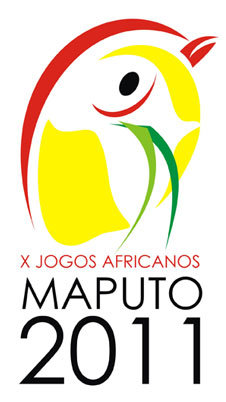
The 10th All-Africa Games took place between September 3–18, 2011 in Maputo, Mozambique. Maputo's hosting marked the third time the Games was held in the southern part of the continent.

The Roman Catholic Archdiocese of Nampula is an archbishopric and the metropolitan see for one of the three ecclesiastical provinces in Mozambique in (south)eastern Africa, yet still depends on the missionary Roman Congregation for the Evangelization of Peoples.

Marracuene District is a district of Maputo Province in southern Mozambique. The principal town is Marracuene. The district is located in the center of the province, and borders with Manhiça District in the north, the city of Maputo in the south, and with the city of Matola and with Moamba District in the west. In the east, the district is limited by the Indian Ocean. The area of the district is 703 square kilometres (271 sq mi). It has a population of 136,784 as of 2007.

Manhiça District is a district of Maputo Province in southern Mozambique. The principal town is Manhiça. The district is located in the north of the province, and borders with Magude District in the north, Bilene Macia District of Gaza Province in the northeast, Marracuene District and the city of Maputo in the south, and with Moamba District in the west. In the east, the district is limited by the Indian Ocean. The area of the district is 2,373 square kilometres (916 sq mi). It has a population of 159,812 as of 2007.

Josina Abiathar Muthemba Machel was a leader of FRELIMO and a significant figure in the struggle for independence in Mozambique.

The history of rail transport in Mozambique began in the latter years of the nineteenth century.
The following is a timeline of the history of the city of Maputo, Mozambique.

Maputo City Hall or Municipal Council Building of Maputo is the seat of the local government of the capital of Mozambique. The neoclassical building is located at the head of Praça da Independência, and was erected in 1947.

Vila Algarve is a residential house in the Mozambican capital Maputo. Built in 1934 and later protected as a listed building, the building housed the Portuguese secret police PIDE/DGS until the end of the Portuguese colonial period in Mozambique. It is located at the intersection of Avenida Mártires da Machava and Avenida Ahmed Sekou Touré.

The history of Maputo, the capital of Mozambique, traces its origins back over 500 years, when a fishing village developed by Maputo Bay on the site where the modern city of Maputo now stands. The first Europeans to discover the bay were Portuguese navigators led by António de Campo in 1502. In 1544, the Portuguese merchant and explorer Lourenço Marques reached the bay and named it Delagoa Bay. The Portuguese established a fort on the site, but were soon forced to abandon it. In 1721, the Dutch East India Company established Fort Lydsaamheid on the bay, but abandoned it due to conflicts with local Africans and the unhealthy environment. In the mid-18th century, the Portuguese returned to the bay, selling ivory to British ships carrying Indian textiles. In 1773, William Bolts of the Trieste Company reached the bay and claimed it for the Holy Roman Empire. Bolts and the Austrians were forced out in 1781 by Portuguese ships sent from Goa.
Esperança Abiatar Muthemba was a Mozambican independence activist and politician. In 1977 she was one of the first group of women elected to the People's Assembly.
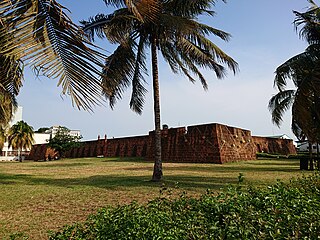
The Fort Nossa Senhora da Conceição of Lourenço Marques, nowadays known as the Maputo Fortress is located at Praça 25 de Junho and represents one of the main historical monuments of the city of Maputo, former Lourenço Marques, in Mozambique.
















